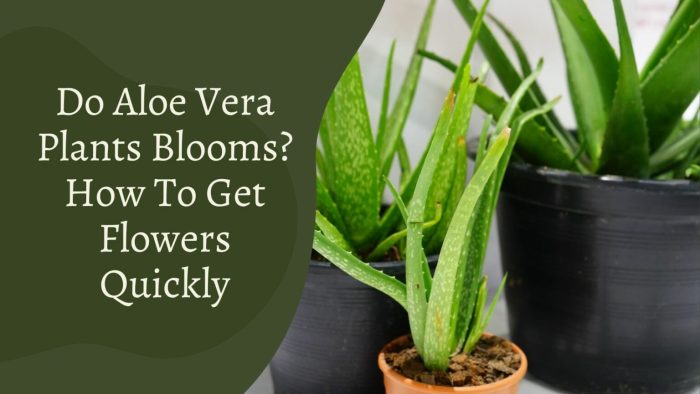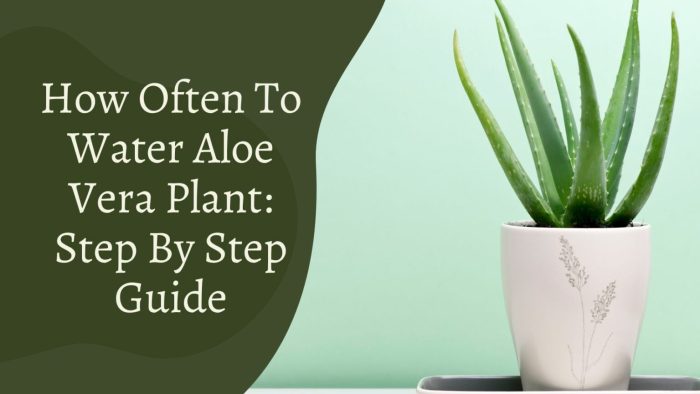How Often Should I Water My Aloe Plant?
Understanding Aloe Vera Watering Needs
How often should i water my aloe plant – Proper watering is crucial for the health and thriving of your aloe vera plant. The frequency depends on several interacting factors, ensuring you provide the right amount of moisture without overwatering or underwatering.
Factors Influencing Watering Frequency
Several key factors influence how often you should water your aloe vera. These include the size of the pot, the climate you live in, the current season, and the type of soil used.
- Pot Size: Smaller pots dry out faster than larger ones, requiring more frequent watering.
- Climate: Hot, dry climates lead to faster soil evaporation, necessitating more frequent watering compared to cooler, humid environments.
- Season: Aloe vera plants typically require less water during the colder months (autumn and winter) when their growth slows down. Watering frequency should increase during the warmer months (spring and summer) when growth is more active.
- Soil Type: Well-draining soil is essential for aloe vera. Clay soils retain more moisture and may require less frequent watering than sandy soils, which drain quickly.
Signs of Overwatering and Underwatering
Recognizing the signs of both overwatering and underwatering is key to maintaining a healthy aloe vera plant. These visual cues will help you adjust your watering schedule accordingly.
- Overwatering: Leaves become mushy or soft, may yellow or brown, and the base of the plant might appear to rot. The soil remains consistently wet.
- Underwatering: Leaves become shriveled or wrinkled, and the edges may turn brown and crispy. The soil feels completely dry.
Watering Needs of Different Aloe Vera Varieties
While general principles apply, slight variations in watering needs exist among different aloe vera varieties due to size and growth habits. Larger varieties, for instance, may require slightly more water than smaller, compact ones. However, the core principles of well-draining soil and avoiding overwatering remain consistent across all varieties.
Watering Frequency Based on Season and Climate
The table below provides a general guideline for watering frequency, keeping in mind that these are estimates and should be adjusted based on your specific environment and observations of your plant.
| Season | Climate Type | Watering Frequency | Soil Moisture Check Method |
|---|---|---|---|
| Spring | Hot and Dry | Once a week | Insert finger 2-3 inches into the soil; water when dry |
| Summer | Hot and Dry | Twice a week | Insert finger 2-3 inches into the soil; water when dry |
| Autumn | Mild | Every 2 weeks | Insert finger 2-3 inches into the soil; water when dry |
| Winter | Cool | Once a month or less | Insert finger 2-3 inches into the soil; water only when very dry |
Practical Watering Methods
Several methods can be used to water your aloe vera plant, each with its own advantages and disadvantages. Choosing the right method depends on your preferences and the specific needs of your plant.
Watering Methods: Top Watering vs. Bottom Watering
Two common methods are top watering and bottom watering. Both have their merits, and understanding these differences can help you optimize your watering technique.
- Top Watering: This involves gently pouring water onto the soil surface. It’s simple and straightforward, but overwatering is more likely if you’re not careful. Ensure water doesn’t pool around the base of the plant.
- Bottom Watering: This involves placing the pot in a tray of water and allowing the plant to absorb moisture from the bottom up. This method helps prevent overwatering and encourages deeper root growth. The plant will absorb water as needed.
Checking Soil Moisture
Before watering, always check the soil moisture. This prevents overwatering, a common cause of aloe vera plant problems. The best way is to insert your finger about 2-3 inches into the soil. If it feels dry, it’s time to water.
Step-by-Step Watering Guide
Follow these steps for proper watering to maintain a healthy aloe vera plant.
- Check Soil Moisture: Insert your finger 2-3 inches into the soil. If it feels dry, proceed to watering.
- Choose Your Method: Select either top watering or bottom watering.
- Water Thoroughly: If top watering, pour water slowly and evenly until it drains from the drainage holes. If bottom watering, let the pot sit in water for 30 minutes, ensuring the soil is thoroughly moistened.
- Remove Excess Water: If bottom watering, remove the pot from the tray after 30 minutes to prevent root rot.
- Monitor Your Plant: Observe your plant for any signs of overwatering or underwatering and adjust your watering schedule accordingly.
Aloe Vera Plant Care Beyond Watering
While watering is crucial, other aspects of care significantly impact the health and growth of your aloe vera plant. These include sunlight exposure, soil composition, and pest and disease prevention.
Sunlight, Soil, and Pests: Essential Considerations

Source: gardeningleaves.com
Optimal sunlight, well-draining soil, and pest control are all critical for a healthy aloe vera plant. Neglecting any of these can lead to weakened plants and reduced growth.
- Sunlight: Aloe vera thrives in bright, indirect sunlight. Avoid direct, intense sunlight, which can scorch the leaves. A south-facing window with some shade during the hottest part of the day is ideal.
- Soil: Use a well-draining potting mix specifically formulated for succulents or cacti. Adding perlite or coarse sand to improve drainage is beneficial.
- Pests and Diseases: Common aloe vera pests include mealybugs, aphids, and spider mites. Regularly inspect your plant for these pests and treat them promptly with insecticidal soap or neem oil. Proper watering and good air circulation can help prevent fungal diseases.
Addressing Specific Scenarios
Watering needs change depending on the plant’s stage of growth and other circumstances. Adjusting your watering strategy based on these factors is essential for optimal plant health.
Watering Adjustments Based on Plant Stage and Conditions
The table below provides guidance on adjusting watering based on different scenarios. Remember, these are guidelines; always observe your plant’s condition for the most accurate assessment.
| Scenario | Watering Frequency Adjustment | Soil Moisture Monitoring | Additional Care Tips |
|---|---|---|---|
| Newly Potted Plant | Water less frequently initially to allow roots to establish | Check soil moisture frequently | Avoid fertilizing immediately after potting |
| Dormancy (Winter) | Significantly reduce watering frequency | Water only when soil is completely dry | Provide minimal fertilization during dormancy |
| Active Growth (Summer) | Increase watering frequency | Check soil moisture more often | Consider providing balanced fertilizer |
Troubleshooting Watering Issues

Source: gardeningleaves.com
Even with careful attention, watering problems can occur. Knowing how to address these issues is vital for maintaining a healthy aloe vera plant.
Reviving Overwatered and Underwatered Plants
Both overwatering and underwatering can be detrimental. Knowing how to address each issue is crucial for your plant’s survival.
- Overwatered: Remove the plant from the pot, trim away any rotted roots, and repot it in fresh, dry, well-draining soil. Allow the soil to dry completely before watering again.
- Underwatered: Gradually rehydrate the plant by bottom watering or carefully applying water to the soil. Avoid overwatering to prevent further damage.
Preventing Watering Mistakes, How often should i water my aloe plant
Preventing watering mistakes is key to maintaining a healthy aloe vera plant. Consistency and observation are crucial.
- Regularly check soil moisture before watering.
- Use a well-draining pot and soil mix.
- Adjust watering frequency based on season and climate.
- Observe your plant regularly for signs of stress.
Q&A: How Often Should I Water My Aloe Plant
Can I use tap water for my aloe plant?
It’s best to use filtered or distilled water, as tap water can contain minerals that may harm your aloe vera.
My aloe vera leaves are yellowing. Is it overwatering?
Yellowing leaves can indicate overwatering, but also other issues like nutrient deficiency or sunburn. Check the soil moisture and adjust accordingly.
How often should I fertilize my aloe vera?
Fertilize sparingly, only during the growing season (spring and summer), using a balanced, diluted liquid fertilizer.
What should I do if my aloe vera is drooping?
Drooping can signify underwatering or root rot. Check the soil moisture and adjust watering accordingly. If root rot is suspected, repotting may be necessary.




















